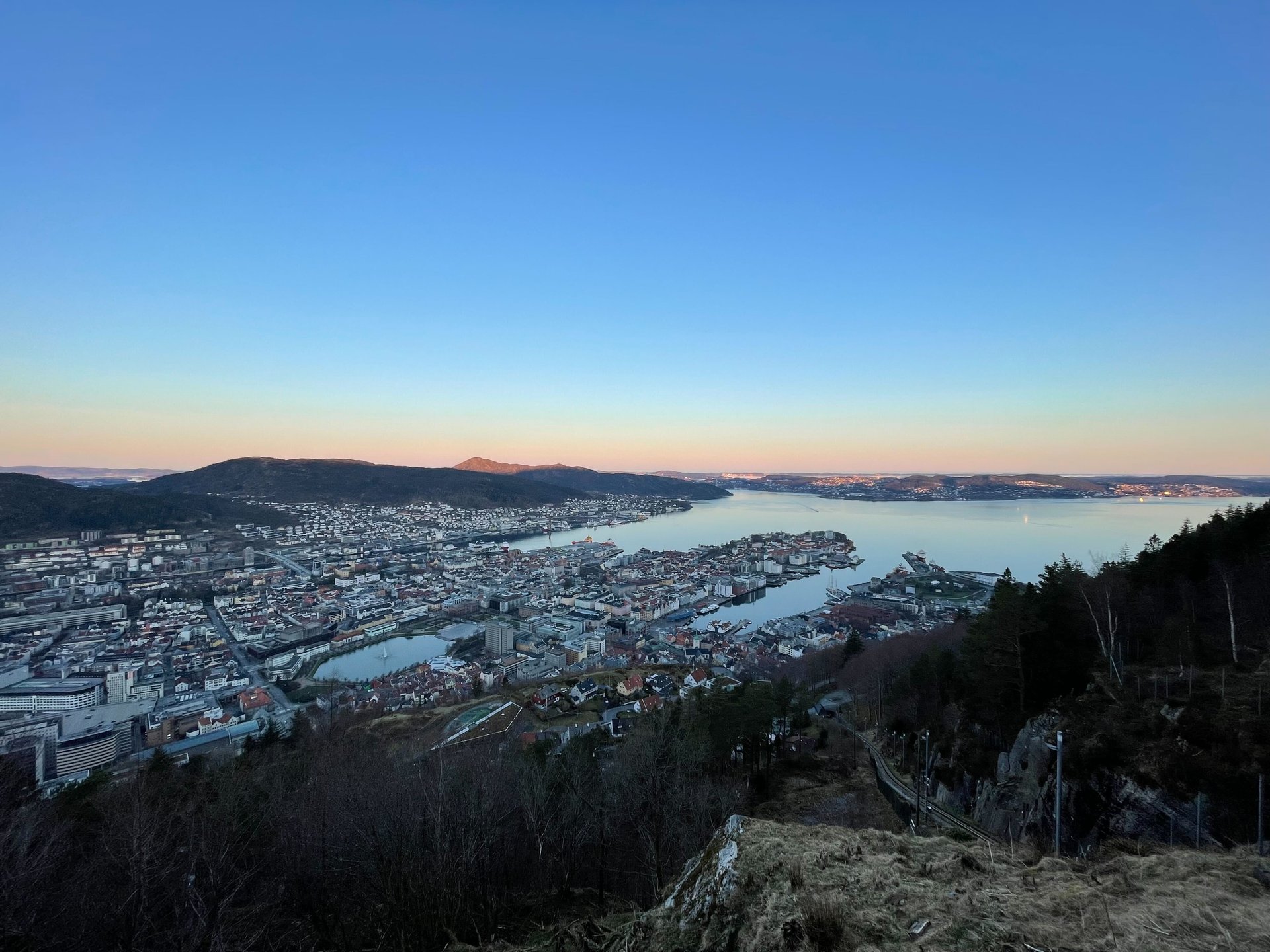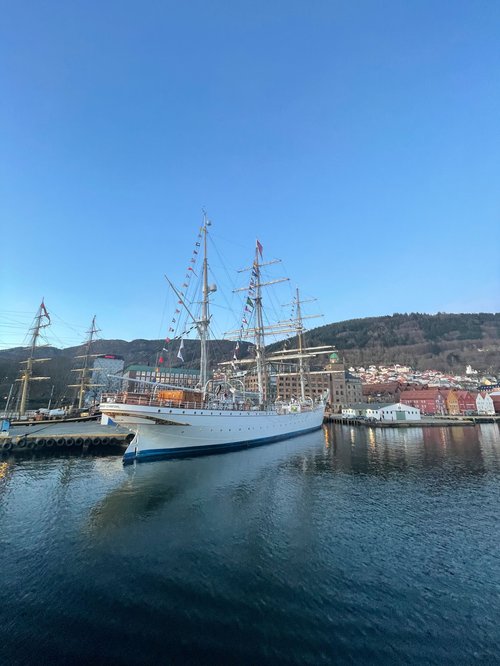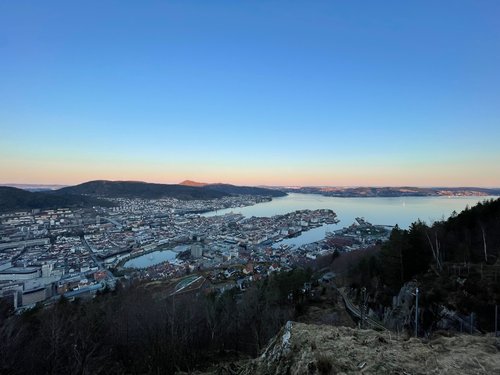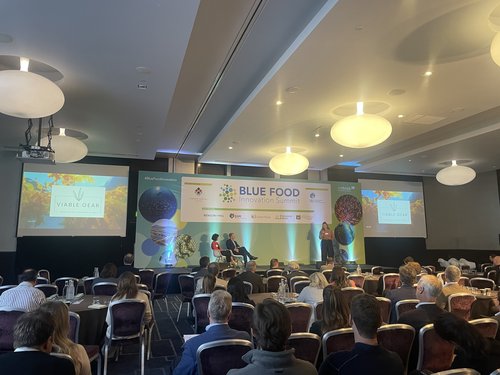
Areas of Exploration: Summer 2023
In the past six months, our team has immersed ourselves in field visits to the Faroe Islands, Portugal, Norway, United Kingdom, and Canada. Here are some of our reflections.
This year we committed to deepen our knowledge beyond the Gulf of Maine to better support companies seeking our assistance. We also focused on building both regional and international relationships where our scientific expertise can add value to the blue economy startup community. In the last six months our team has had the privilege to immerse ourselves in field visits to the Faroe Islands, Portugal, Norway, the United Kingdom, and Canada. We have also benefited tremendously from visits to our peers throughout New England to learn more about their work, facilities, and capacity to support the emerging blue economy. We met with numerous startup company founders to learn about their innovations and enabling technologies. We did “deep dives” with a wide range of practitioners including aquaculturists, wild harvesters, engineers, technical experts, field technicians, peer investors, and science partners. This on-the-ground time has been key to broadening our perspective and building a number of important partnerships. We are incredibly grateful to the organizations and individuals who shared their knowledge and operational expertise with us during our travels. Following are a few of our collective reflections on the past six months.
Investment Landscape
In the United States, the blue economy sector has been slow to receive capital investments due to a lack of sector knowledge and a limited number of successful exits. While there is growing excitement and momentum as new accelerators and funds are beginning to emerge, currently, overall investment remains inadequate relative to the long-term potential of this sector. In contrast, countries like Norway and Canada are assertively addressing the existing capital gap through private/public partnerships and focused government support. One particularly encouraging sign is the growing number of family offices both here and abroad that have taken note of this emerging sector.

Our Norwegian colleagues have access to substantial national wealth from their massive oil and gas industry, along with deep expertise in oceans, fisheries, and shipping. We were very impressed with their financial support of an emerging cluster of entrepreneurs across all verticals within the blue economy. At the same time, we noticed that many Norwegian family offices appear a bit conservative with regard to their risk tolerance and are mostly focused on European investments. As European early-stage companies seek to enter US markets and funds, we anticipate that there will be a need to expand knowledge bases bi-directionally and we intend to play an active role in meeting with the relevant players.
In Halifax, it was exciting to see the Canadian government infrastructure and broad-based entrepreneurial support that is being developed to build Atlantic Canada’s ocean technology sector. The Canada Ocean Supercluster initiative, Ambition 2035, aims to grow the country’s ocean economy 5x to $220B CAD by 2035, with a major focus on energy ($100B), seafood ($25B, 3x current size of industry), ocean technology, and port /transportation. We are beginning to see opportunities for cross-border investment as Canadian entities look to the US for market footholds and simultaneously, large national funded “calls for solutions” are being launched in Atlantic Canada which will be open to US entrepreneurs. We look forward to a deepening collaboration with our Canadian neighbors and are actively engaged in supporting companies where there is an opportunity to scale and relevance to our regional interests.
In the Northeastern United States, we need to build a focused blue economy investor base while simultaneously de-risking the investments themselves. Our team envisions anchoring a growing network of engaged investors and industry collaborators to support scalable companies through our commercialization platform. We anticipate increased collaboration with colleagues throughout New England as the blue economy sector continues to accelerate.
Ocean Clusters
As we traveled it was inspiring to see an operational ocean cluster at scale in Bergen, Norway with innovators, established industry players, as well as integrated technology, investment, and social metrics all embedded. This ocean cluster model is also vibrant and growing across the North Atlantic Rim in Iceland, Denmark, Sweden, and throughout the United Kingdom.

Similarly, our neighbors in Atlantic Canada have made huge strides and put enormous government investment in their blue economy work. We made new connections and reinforced important emerging relationships with the teams from Creative Destruction Lab as well as the Canadian Boston Consulate and Innovate Halifax. There are tremendous synergies between our work here in New England and what’s happening throughout the blue economy in Atlantic Canada and beyond. At Demo Day at COVE in Halifax, we saw over 50 companies showcasing their products and services, many of which are relevant in our markets. The COVE facility underlined the importance of having physical space adjacent to the water to support technology R&D efforts as companies focus on prototyping and iterating their products and services in the field.
The early investment momentum, infrastructure, and innovation happening in Northern Europe and Northeastern Canada creates a growing opportunity for New England. We see a real need to anchor this side of the North Atlantic with programs and technical expertise to support a more active flow of companies between the US and northern Europe.
Emerging Industry Trends
We also had the privilege of attending several food-related conferences in London, Halifax, and Portland which provided us some interesting perspective on emerging trends.

The Emergence of Seaweed
A recurring theme across all three conferences was the rise of seaweed. The industry has seen a surge of interest from major new stakeholders, including mainstream corporations seeking to reduce their carbon footprints by introducing more environmentally friendly core products. Seaweed is more than just a passing trend; it is now an emerging, significant player in the global food industry with big companies betting on scaling production for both animal feed as well as human consumption.
We explored advancements in seed selection, grow-out, harvest, and processing operations. These developments are driving increased demand for seaweed supply and accessibility. The bottom line is that in the western hemisphere demand far exceeds supply at this time, and we will need further development of the entire supply chain to fully leverage the opportunities presented by this surge in seaweed interest.
Understanding supply sources, establishing biorefinery technology and availability, and creating clear avenues for the use of seaweed specific to various markets and price points at scale are all going to be critical to ensuring the industry's long-term success.
Genetics and Feed Alternatives
Another emerging area in the aquaculture sector is in fish genetics with a particular focus on fish health and the development of detection tools designed to inform farm operators of any possible signs of disease or distress. The pursuit of innovative feed alternatives will be increasingly important to reducing the industry's dependency on traditional fish-based feeds. While promising substitutes for fish meal do exist, opportunities to pilot these alternative feed options and ultimately transition production to scale remains a major industry challenge. Partnerships with the few global aquaculture feed producers will be key, as well as prioritization of this effort by larger scale aquaculture farms pushing this agenda forward using their purchasing power with industry.
Commercial Fishing and Technology/Waste Reduction
Throughout our travels, we noticed that commercial fishing and related technologies were often overlooked or non-existent in innovation discussions, where aquaculture tended to take center stage. Our existing wild harvest sectors remain ripe for innovation and modernization. Traceability, increased operational efficiencies, and reduction of carbon emissions and fish waste are three key areas where there will be investment opportunities. We remain attuned to this market sector and supportive of emerging entrepreneurs with solutions in our traditional industry sector.
Deep Tech and Engineering Innovations
In Halifax in particular, we observed a strong focus on engineering and deep tech innovations related to ocean observing, autonomous vehicles, and ocean mapping. While these developments are essential for understanding ocean ecosystems, it was surprising to see limited attention to fisheries and aquaculture in this setting. This presents a unique opportunity for collaboration between different sectors, leveraging technological advancements to support both fisheries, and sustainable aquaculture practices.
The Gulf of Maine: A Testbed for Innovation
The Gulf of Maine's diverse ecosystem, encompassing aquaculture, alternative seafood, commercial fishing, and deep technology innovations serves as an ideal testbed for innovations. The synergies among these sectors create a fertile ground for exploring comprehensive solutions with global implications. By fostering collaboration and cross-sector knowledge exchange, the Gulf of Maine will play a pivotal role in shaping the future of the blue economy. As we move forward, it will be crucial to strike a balance between these sectors and foster innovation, collaboration, and market development to drive the marine industry towards a more sustainable and prosperous 21st century economy.